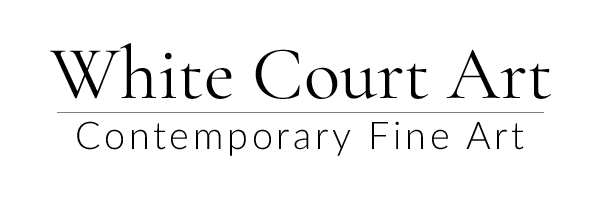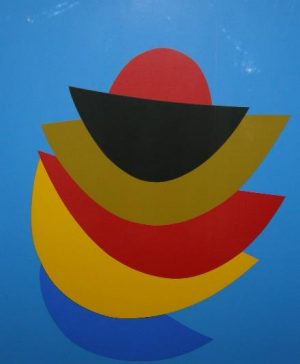Sir Terry Frost RA (1915-2003) was a giant of British abstract Art. He was born in Leamington Spa in 1915, and left school at the age of 14. Frost worked at Curry’s Cycle shop and Armstrong Whitworth in Coventry until the outbreak of WW II. He served in Palestine and Greece, before being captured in 1941. Frost remained a prisoner until the end of the war. This experience that changed his outlook on life and introduced him to the possibilities of art. In a Bavarian prison camp Frost began to paint and draw, encouraged by young artist and fellow prisoner Adrian Heath.’In prisoner-of-war camp I got tremendous spiritual experience, a more aware or heightened perception due to starvation, and I honestly do not think that awakening has ever left me.’ Frost worked as Barbara Hepworth’s assistant in 1951 and had his first solo exhibition at the Leicester Galleries in 1952. Frost taught at many institutions including the Bath Academy of Art (1952-4), Leeds University (who awarded him he was the Gregory Fellowship in 1954) and Reading University. In 1960 Frost had his first solo show in New York at the Barbara Schaefer Gallery. Whilst there he met some of the leading American Abstract Expressionists, and the experience encouraged him to start painting on a much larger scale. He was awarded the John Moore’s Prize in 1965, elected to the Royal Academy in 1992 and knighted in 1998. A retrospective of his work was held at the Royal Academy in 2000. Frost’s work reflects his gratitude and joie de vivre at having survived wartime incarceration; it is full of colour, light and the pleasure of existence ‘a sense of delight in front of nature’. Frost took his inspiration from nature; the sun, moon, water, boats and the female form are recurring motifs abstracted into sensuous circles and curves. These shapes are often coloured in dramatic blues, reds, oranges, yellows and blacks. Frost believed that the interplay of colour and shape could realise an event or image more successfully than imitation. He combined strict formal discipline with great expressive freedom and a natural sureness of touch.

